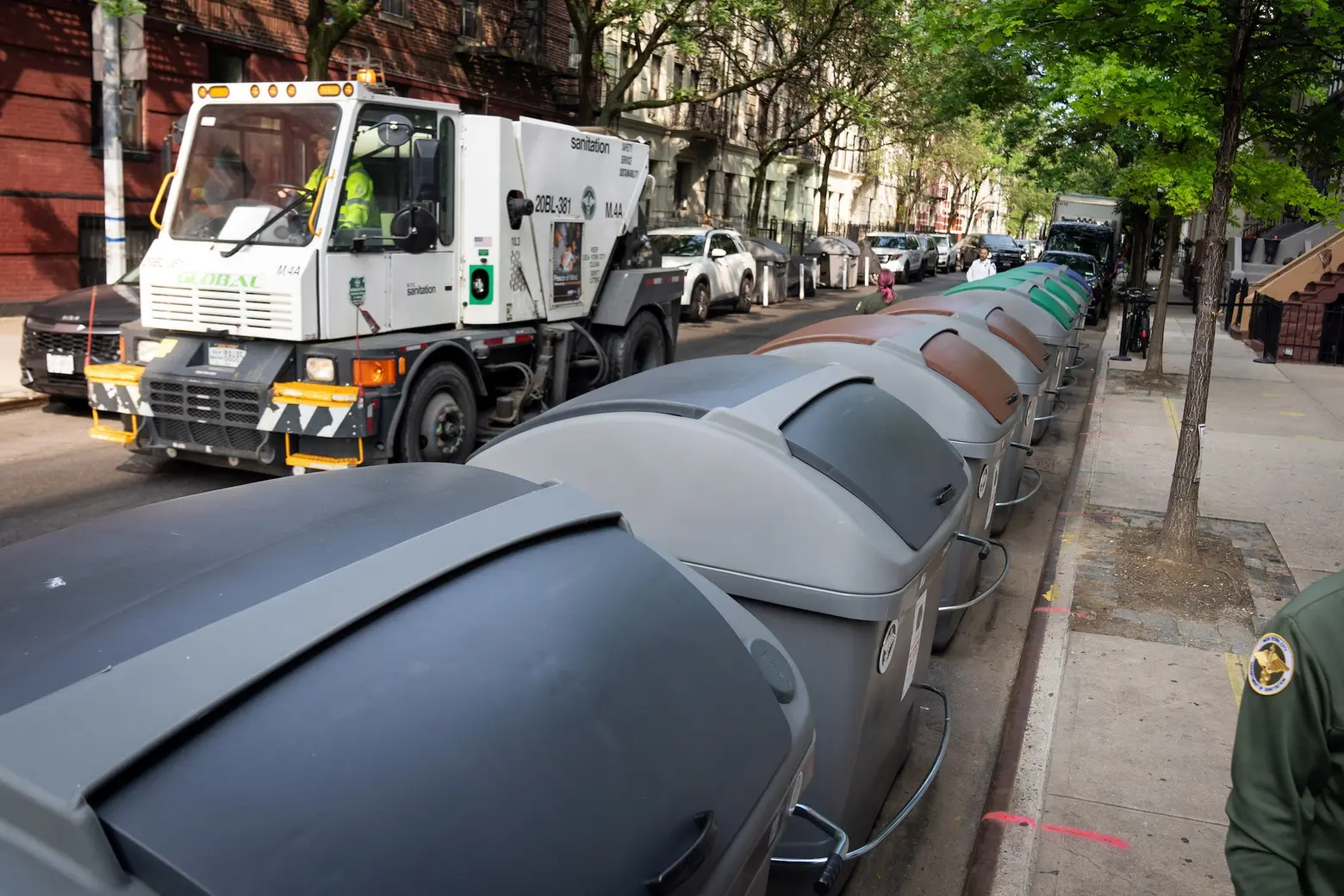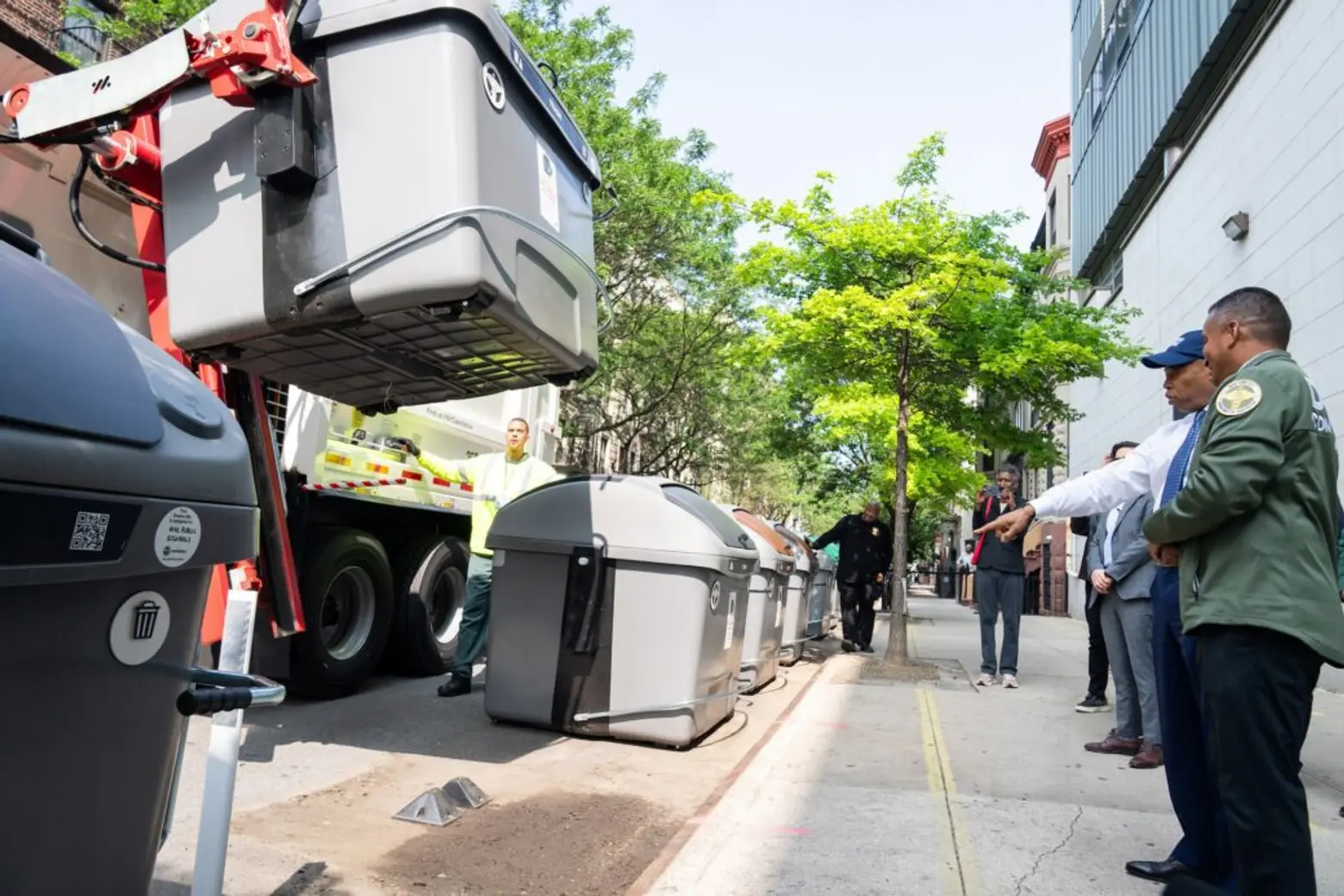Fort Greene and Clinton Hill will be next NYC neighborhoods to fully containerize trash


The Empire Bins in West Harlem. Photo credit: Ed Reed/Mayoral Photography Office on Flickr
Fort Greene and Clinton Hill are following West Harlem’s lead and will become the next neighborhoods in New York City to fully containerize trash. Mayor Eric Adams and Department of Sanitation Commissioner Javier Lojan on Tuesday announced that schools in Brooklyn Community District 2 will receive on-street trash containers, known as Empire Bins, this fall, with all high-density residential buildings in the area scheduled to follow next year. Building on the success of West Harlem’s program, all buildings in the district must place trash in containers, with those with 31 or more units required to use Empire Bins.

“Our ‘Trash Revolution’ is delivering cleaner streets, a better quality of life, and nine straight months of fewer rat sightings. The rats are losing—and Brooklyn is next,” Adams said in a statement. “As the rats crash out, we are ramping up. Today, we are proud to launch the next phase of the ‘Trash Revolution’: the Battle of Brooklyn.”
In June, West Harlem became the first neighborhood in North America to fully containerize its trash. Over the course of five weeks, the DSNY rolled out roughly 1,100 bins, assigning them to individual buildings instead of entire blocks, with key cards given to property owners for access. Fort Greene and Clinton Hill’s program will operate the same way.
Empire Bins can hold about 794 gallons of waste, or about 25 large 32-gallon trash bags. Buildings with 10 to 30 units have been given the option to either have an Empire Bin assigned to them or to use smaller “wheelie bins” for their trash, as 6sqft previously reported.
Trash is collected from the bins three times a week by the city’s new automated side-loading garbage trucks, developed in collaboration with designers in Italy, Hicksville, and Brooklyn. First introduced in DSNY’s “Future of Trash” report, the trucks use side-loading technology specifically designed to service the on-street bins.
As of March 2024, the city requires all businesses to place their trash in bins, and since November 2024, it has required residential buildings with up to nine units to follow the same rules. Together, these regulations have containerized 70 percent of all city trash.
In the nine-month period since low-density residential containerization requirements went into effect last year, rat sightings reported to 311 have dropped when compared to the same month the previous year, according to a press release.
The city plans to expand Empire Bins citywide in 2026, with Downtown Brooklyn, Boerum Hill, Brooklyn Heights, Fulton Ferry, Dumbo, Vinegar Hill, and the Brooklyn Navy Yard among the first neighborhoods to receive them.
“Bin by bin, we are proving the naysayers wrong and showing the world that New York City can have clean streets and sidewalks, just like cities around the world have done for decades,” Lojan said. “I have seen a lot of innovation in my 26 years with the Sanitation Department, but containerizing trash using on-street containers is by far the most significant.”
Despite its success, the initiative remains a pilot program, and its future depends on the next mayoral administration. Former Gov. Andrew Cuomo has expressed support for containerization, while Democratic nominee Zohran Mamdani has called for the program to go even further.
Additionally, city officials expect expanding the program to be complex and costly, potentially requiring them to remove over 50,000 parking spots and spend hundreds of millions of dollars on trucks and bins over the next decade, according to the Times.
RELATED:
Source link




